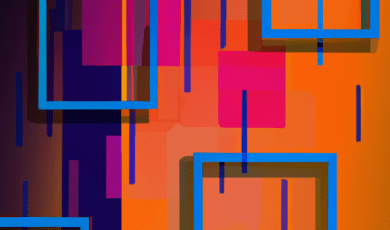
When updating or designing your bathroom, the first big decision you’ll face is: Should you go modern or traditional? Bathrooms are no longer just functional spaces—they’re personal sanctuaries, opportunities to showcase your sense of style and comfort. Whether you dream of a sleek, spa-like retreat or a classic, timeless oasis, understanding the key differences and benefits of both modern and traditional bathrooms will help you determine which design best suits your home and your lifestyle. Dive into our comprehensive guide to unlock the secrets of both styles, and discover the one that’s perfect for you!
What Defines a Modern Bathroom?
Modern bathrooms are all about simplicity, clean lines, and a clutter-free atmosphere. They embody contemporary design principles, focusing on form and function, innovative technology, and a seamless aesthetic.
- Minimalist Design: Modern bathrooms tend to have a stripped-down look. The use of sleek surfaces, flat-panel cabinetry, floating vanities, and unobtrusive hardware is common. These spaces often feature large-format tiles or continuous surfaces for floors and walls to create an uninterrupted visual flow.
- Neutral Color Palettes: Popular modern hues include whites, grays, blacks, and earth tones. Accents are usually sparse but may be introduced through bold fittings or statement lighting.
- High-Tech Features: Integrated technology sets modern bathrooms apart. Think smart toilets, touchless faucets, LED-lit mirrors, heated floors, and digital showers.
- Materials: Glass, polished metals, concrete, engineered stone, and high-gloss finishes are embraced not only for their aesthetics but also for their durability and ease of maintenance.
- Natural Light: Large windows or thoughtfully placed skylights are often included to maximize daylight and create a refreshing, open ambiance.
Example: Imagine stepping into a bathroom with a frameless walk-in shower, a floating vanity with vessel sinks, a backlit mirror, and a monochromatic color scheme. Every detail is intentional and streamlined—uncluttered yet stunning.
What Defines a Traditional Bathroom?
Traditional bathrooms draw inspiration from classic European interiors, exuding warmth, elegance, and nostalgia. They often pay homage to historical details and time-honored craftsmanship, resulting in spaces that feel familiar, inviting, and luxurious.
- Ornate Details: Expect intricate moldings, decorative trims, raised-panel cabinetry, and antique-style hardware. Beadboard paneling and wainscoting often adorn the walls.
- Warmth and Texture: Traditional designs employ rich wood tones, natural stone (like marble or granite), and soft, muted colors—think creams, beiges, blues, soft greens, and pastels.
- Classic Fixtures: Clawfoot tubs, pedestal sinks, and heritage-style faucets establish an air of sophistication. Statement mirrors with ornate frames and vintage-inspired sconces elevate the space.
- Pattern and Decoration: Decorative tilework (such as subway, hexagon, or encaustic tiles), patterned wallpaper, and textiles like embroidered towels or window treatments add charm and character.
- Comfort Focused: Traditional bathrooms often emphasize a cozy, welcoming feel—think plush bath rugs, freestanding soaking tubs, and layered lighting.
Example: Picture a bathroom featuring a deep clawfoot tub, wainscoted walls painted in soft blue, marble countertops atop furniture-style vanities, and vintage brass fixtures. Every element feels thoughtfully chosen to evoke comfort and elegance.
Modern vs. Traditional: Comparing Key Elements
| Element | Modern Bathroom | Traditional Bathroom |
|---|---|---|
| Layout | Open, streamlined, often with floating installations | Symmetrical, compartmentalized, built-in furnishings |
| Fixtures & Faucets | Minimalist, geometric, sometimes industrial | Ornate, curved, classic silhouettes |
| Materials | Glass, metal, concrete, engineered stone | Natural stone, wood, porcelain, ceramic |
| Color Palette | Monochromatic, neutral, bold accents sparingly | Warm, soft, pastel colors; natural wood tones |
| Lighting | LED, recessed, indirect, statement pieces | Chandeliers, sconces, layered with natural light |
| Accessories | Minimal, functional | Decorative, vintage-inspired |
Choosing the Right Style for Your Home
Consider Your Home’s Architecture
Start by looking at the bones of your house. Do you own a historic Victorian, a mid-century modern, or a contemporary new build? Matching your bathroom style to your home's architecture will create a cohesive look and can even add value to your property.
Think About Your Lifestyle
Modern bathrooms are perfect for those who value efficiency, easy cleaning, and high-tech amenities.
- Best for: Busy families, tech enthusiasts, or anyone who loves a minimalist aesthetic.
Traditional bathrooms suit homeowners who appreciate craftsmanship, comfort, and a sense of history.
- Best for: Those who love detailed decoration, vintage elegance, and a relaxing, homely feel.
Personal Expression and Trends
Don’t feel pressure to rigidly follow one style—transitional bathrooms blend modern and traditional elements for a best-of-both-worlds approach. The key is to create a space where you feel relaxed and inspired.
Cost Considerations and Resale Value
Modern bathroom renovations often involve high-tech upgrades and custom materials, which can increase both upfront costs and future resale value due to their wide appeal among buyers looking for a move-in-ready, up-to-date home.
Traditional styles may use more accessible, time-tested materials, and can sometimes be more affordable when it comes to standard finishes. Classic bathrooms also have enduring appeal, especially in older homes, and can provide timeless value.
Regardless of the style you choose, quality workmanship and thoughtful design will always result in a bathroom you’ll love—and one that attracts future buyers.
Design Tips for Your Bathroom Renovation
- Mix and Match: Transitional designs allow the integration of both modern and traditional elements. For example, pair a classic clawfoot tub with modern fixtures, or combine minimalist cabinetry with ornate lighting.
- Lighting Matters: Layer your lighting to enhance mood and functionality. Use dimmers, task lights, and decorative fixtures that complement your chosen style.
- Pay Attention to Details: Small touches, such as drawer pulls, mirror frames, and towel racks, can define the bathroom’s character.
- Prioritize Storage: Whether modern or traditional, smart storage solutions—like hidden cabinets or open shelving—keep your space organized and beautiful.
- Use Quality Materials: Durability is key in any bathroom. Invest in quality surfaces, fixtures, and finishes for lasting impact.
Conclusion: Which Style Suits You Best?
The ideal bathroom reflects both your personal taste and your home’s architectural character. Modern bathrooms showcase innovation, ease of use, and bold, clean aesthetics, while traditional bathrooms champion warmth, rich detail, and classic grace. Consider your daily habits, your long-term needs, and the overall vibe you want to create.
Whichever path you choose, thoughtful planning and attention to detail will ensure your renovation is both beautiful and practical. Let your bathroom be a space where timeless tradition meets modern comfort, and transform it into the ultimate retreat tailored just for you.
Ready to start your bathroom transformation? Browse our website for more inspiration, expert guides, and product reviews—all about bathrooms!








